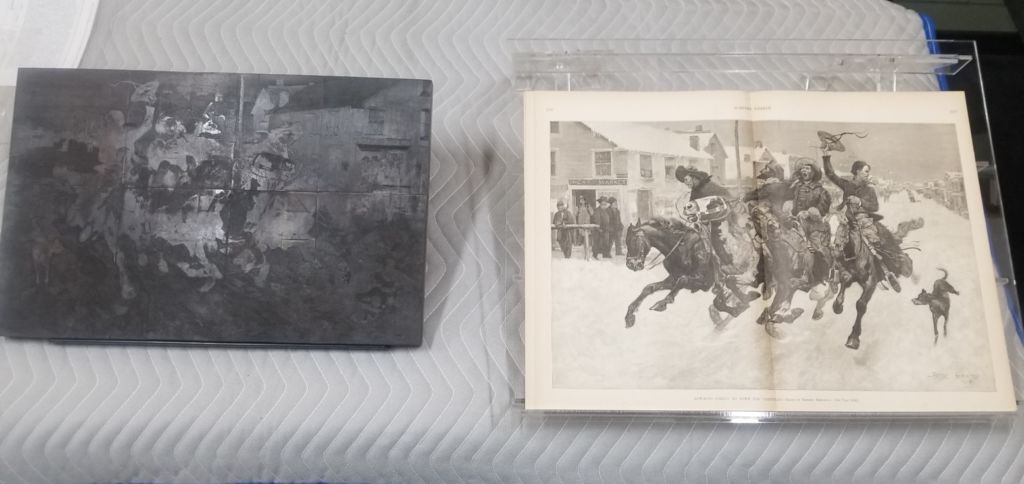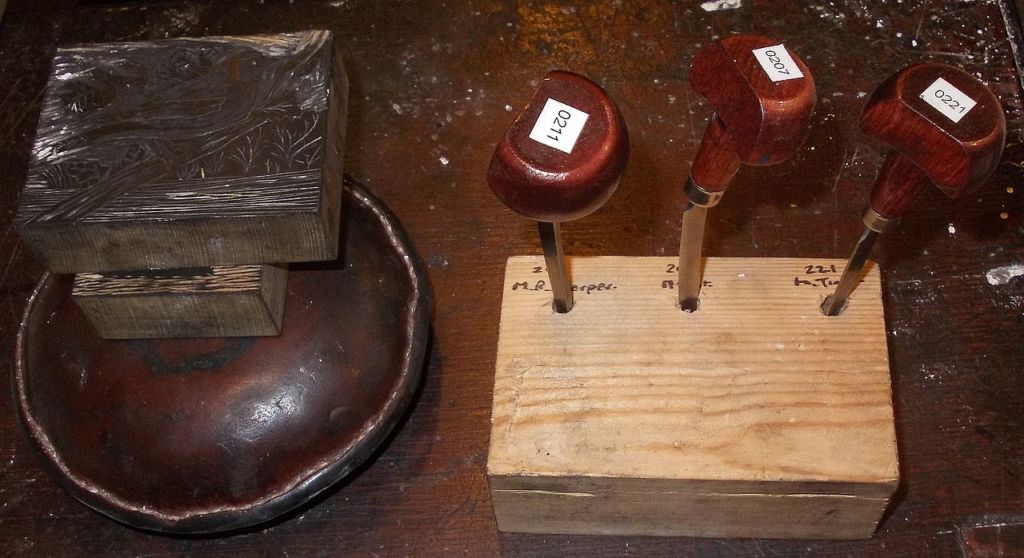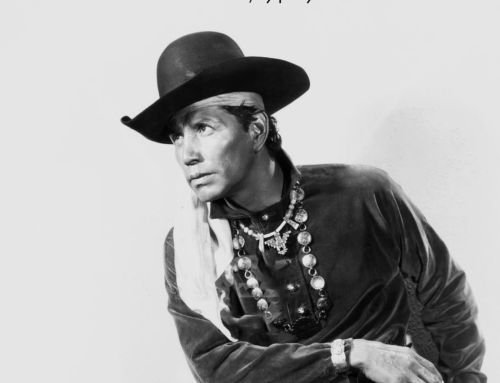As mentioned in a previous blog post, one of the similarities between Frederic Remington and Winslow Homer as demonstrated through our current exhibit, In a Different Light: Winslow Homer & Frederic Remington, is that both artists made their start as illustrators capturing the imagination of the American public through their creation of popular images in publications such as Harper’s Weekly, Collier’s, and Scribner’s Monthly.

Cover of Collier’s Magazine with art by Frederic Remington, March 18, 1905, Public Domain
How did they disseminate their illustrations on such a large scale? Through the process of printmaking. What is printmaking? Printmaking is an artistic process that usually involves transferring images from a template (often made of wood, metal, or glass) onto another surface (most often paper or fabric). One of the benefits of printmaking is that multiple impressions of the same design can be printed from a single template. Some of the more common printmaking techniques include woodcut, etching, engraving, lithography, and screen-printing.
Winslow Homer began his career as a commercial printmaker, apprenticing at the early age of 19 with J. H. Bufford, a Boston commercial lithographer. Eventually Homer sets out on his own and develops a freelance career as an illustrator that lasts nearly 20 years. During his illustration career, Homer contributed illustrations of Boston and rural New England life to magazines such as Harper’s Weekly at a time when the market for illustrations was growing rapidly. His early works are characterized by clean outlines, simplified forms, dramatic contrast of light and dark, and lively figure groupings—qualities that remained important throughout his career.

Winslow Homer (1836-1910), The Coffee Call. [from “Campaign Sketches”], 1863, Lithograph, Amon Carter Museum of American Art, Fort Worth, Texas, 1983.50

Winslow Homer (1836-1910), A Pass Time. Cavalry Rest. [from “Campaign Sketches”], 1863, Lithograph, Amon Carter Museum of American Art, Fort Worth, Texas, 1983.57

Lithography press for printing maps in Munich, photo courtesy Chris 73
Like Homer, illustrations and prints became an important part of Remington’s fame and popularity with the American public. Throughout the 1890s, Remington was well known in American households as an illustrator of the Old West and military subjects.
Remington most often created works en grisaille (or black and white) in oils, ink wash, and gouache that were reproduced by staff printmakers who worked for the publisher.
For example, Remington’s black & white painting The Cow Puncher was made specifically to be reproduced as an illustration in Collier’s for its September 14, 1901 issue.

Frederic Remington | The Cow Puncher | 1901 | Oil (black & white) on canvas | 28 7/8 inches x 19 inches

Frederic Remington, Cow-Boys Coming to Town for Christmas, 1889, Wood Block & Magazine Print, Sid Richardson Museum, 2001.1.1.139
Another such example on view in the exhibit shows the wood engraving block and print that were used in the December 21, 1889 issue of Harper’s Weekly. Remington painted an original black & white painting (now in a private collection) and an engraver at Harper’s translated the image onto a wood engraving block from which the image was printed.
Wood engraving is a relief process in which the design is drawn on a wooden block. Areas that are meant to be white are carved away with a gouge, leaving the lines to be printed standing in relief. The block is then inked and run through a printing press. This process allowed for thousands of printings of Remington’s image to be circulated in an issue of Harper’s Weekly, and made artists like Remington and Homer popular household names.

Leather-covered sandbag, wood blocks and tools (burins), used in wood engraving, photo courtesy of Chiswick Chap
After his early illustration work, Homer became better known for his work in oil on canvas, exhibiting and becoming a member of the National Academy of Design in 1865. He later returned to printmaking as a fine art form in a series of etchings one of which is included in our exhibit, Perils of the Sea, 1888, part of a group of large plate etchings the artist produced in the 1880s that closely followed his painted compositions.

Perils of the Sea, Winslow Homer, 1888, Etching, Amon Carter Museum of American Art, 1983.58
What is an etching? Etching is a printmaking process in which lines or areas are incised into a metal plate using acid. To prepare the plate for etching, it is covered evenly with a layer of acid-resistant varnish or wax, which is called the ground. Once the entire design has been drawn and scratched into the ground with an etching needle, acid is poured over the plate or the plate is immersed in acid. The acid eats into the metal only in the exposed areas creating recesses that can retain ink. Once the printmaker removes the remaining ground, the plate is ready for inking and pressing into a damp sheet of paper to create a print.

The Tools of Etching, Courtesy of Carola Barnaba, DensityDesign Research Lab
Whether a mass-produced print like a lithograph or carefully-produced fine art print like an etching, the careers of Homer and Remington were firmly established in the field of print making and illustration.






Leave A Comment